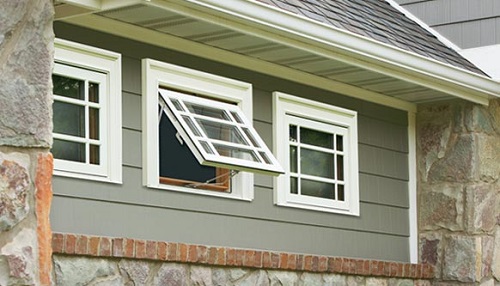Fresh air
The term ‘fresh air’ is commonly used to refer to air that is outside (or from outside) a building or enclosed space, as opposed to that which is inside. In order to ensure a good supply of fresh air, buildings need to be properly ventilated. Sometimes air that is not fresh is referred to as 'stale air'.
The provision of fresh air in a building is important to occupants’ wellbeing and has several benefits, including:
- Increasing oxygen availability and removing carbon dioxide.
- Maintaining a comfortable temperature.
- Enabling optimum brain functioning, increasing energy levels and improving concentration.
- Diluting and removing odours.
- Helping to moderate internal humidity.
- Reducing the accumulation of moisture, bacteria, dust, smoke and other contaminants.
Insufficient fresh air can result in occupants feeling tired, experiencing headaches, irritated eyes, and so on.
The Workplace (Health, Safety and Welfare) Regulations 1992 require that an employer does what is needed to make sure that every enclosed workplace is ventilated by a sufficient quantity of fresh or purified air. It states that the fresh air supply rate should not normally fall below 5-8 litres per second, per occupant. The appropriate rate should be decided by several factors, such as the amount of floor space per occupant, the work activity, possible sources of airborne hazards, and so on.
For more information see: Ventilation.
[edit] Related articles on Designing Buildings
- Air.
- Air conditioning.
- Air quality.
- Air Quality Taskforce.
- At a glance - Indoor air quality.
- Bringing a breath of fresh air to the design of indoor environments.
- Building related illness.
- Clean indoor air for healthy living - New air filter standards.
- Human comfort in buildings.
- Indoor air quality.
- Sick building syndrome.
- Re-circulation air.
- Stale air.
- Thermal comfort.
- Ventilation.
Featured articles and news
The history of building regulations
A story of belated action in response to crisis.
Moisture, fire safety and emerging trends in living walls
How wet is your wall?
Current policy explained and newly published consultation by the UK and Welsh Governments.
British architecture 1919–39. Book review.
Conservation of listed prefabs in Moseley.
Energy industry calls for urgent reform.
Heritage staff wellbeing at work survey.
A five minute introduction.
50th Golden anniversary ECA Edmundson apprentice award
Showcasing the very best electrotechnical and engineering services for half a century.
Welsh government consults on HRBs and reg changes
Seeking feedback on a new regulatory regime and a broad range of issues.
CIOB Client Guide (2nd edition) March 2025
Free download covering statutory dutyholder roles under the Building Safety Act and much more.
AI and automation in 3D modelling and spatial design
Can almost half of design development tasks be automated?
Minister quizzed, as responsibility transfers to MHCLG and BSR publishes new building control guidance.
UK environmental regulations reform 2025
Amid wider new approaches to ensure regulators and regulation support growth.
The maintenance challenge of tenements.
BSRIA Statutory Compliance Inspection Checklist
BG80/2025 now significantly updated to include requirements related to important changes in legislation.























